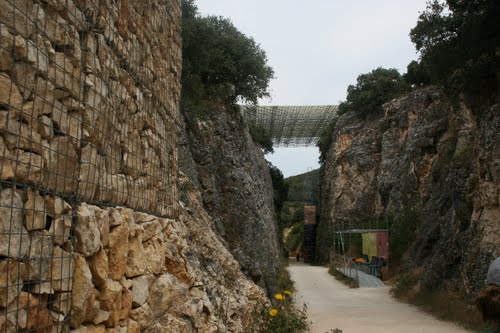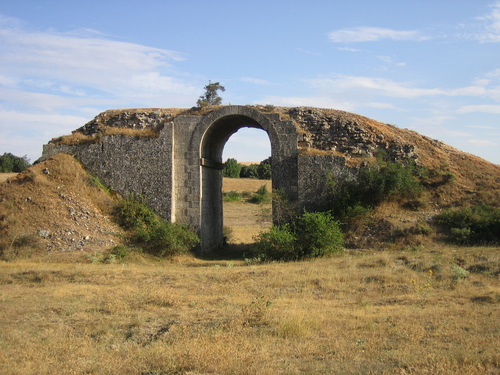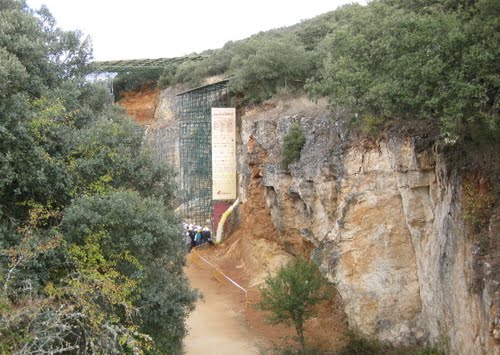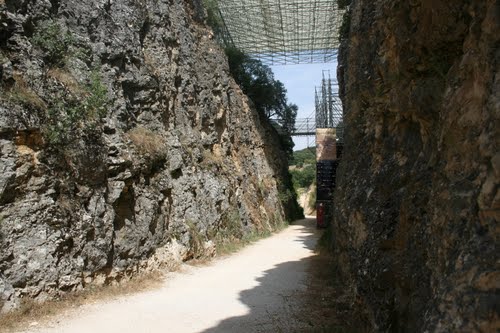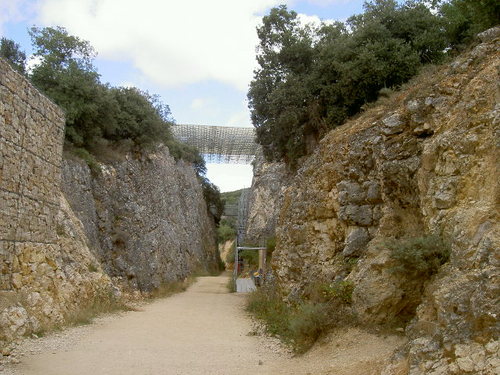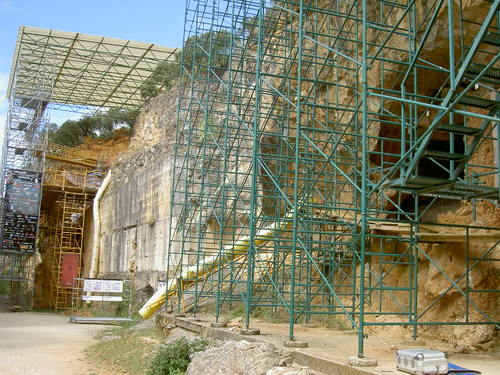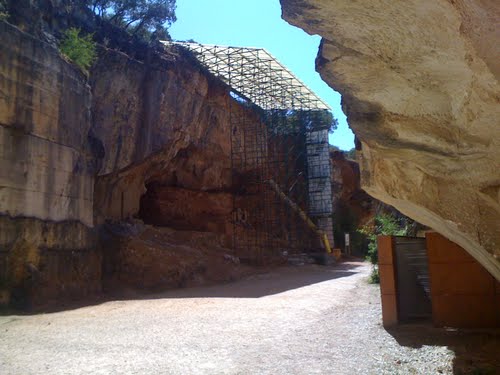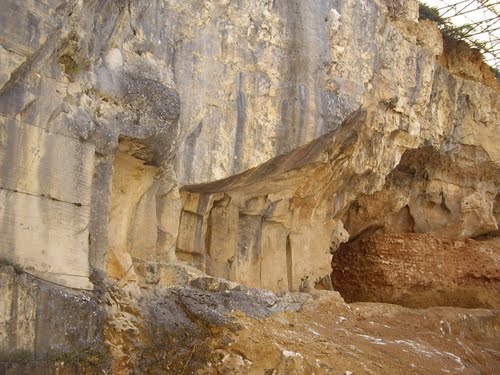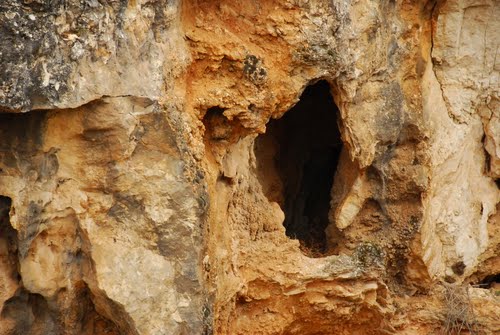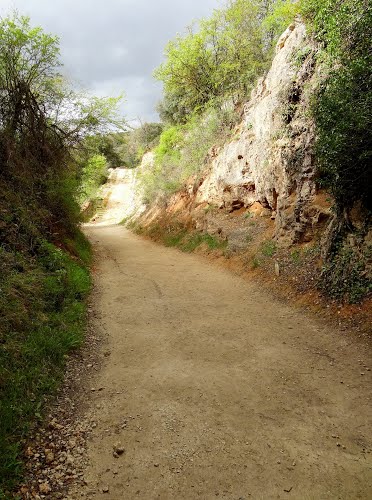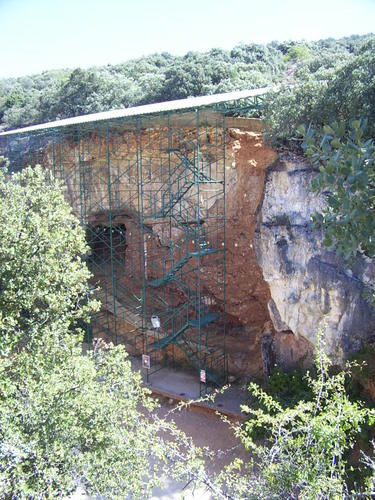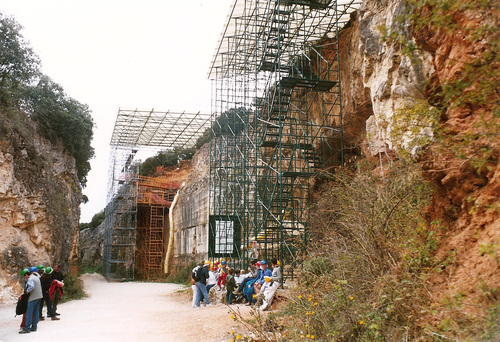The Atapuerca Mountains is an ancient karstic region of Spain, in the province of Burgos, Castile and Leon and near Atapuerca and Ibeas de Juarros. It contains several caves, where fossils and stone tools of the earliest known hominins in Western Europe have been found, belonging to the species Homo antecessor and Homo heidelbergensis. These hominid remains, representing the earliest known in western Europe, have been dated as being up to 1.2 million and 600 thousand years old, respectively. These caves, known collectively as the "Archeological Site of Atapuerca", are a UNESCO World Heritage Site.
Geography of the Atapuerca Mountains
The Bureba Pass connects the Ebro river valley leading to the Mediterranean Sea and the Duero valley leading to that river's outlet at the Atlantic Ocean. This conjunction results in an ecotone rich in species derived from both ecosystems. The pass was part of a Roman causeway, the pilgrimage Way of Saint James and is now traversed by the N-I and AP-1 highways. The location of the Archeological Site of Atapuerca between two major watersheds and its being an important mountain pass may explain the intensity and continuity of hominid habitation found there.
Archaeological Site of Atapuerca
The sites in this area were found during the construction of railway cuts through Gran Dolina, Galeria and Elefante, and in the cave of Sima de los Huesos. The scientific excavation, started by Francisco Jorda Cerda in 1964, has found human remains from a wide range of ages: early humans to the Bronze Age and modern man. Sites in the area have also yielded stone artifacts.
The regional government of Castile and Leon has designated the site an Espacio cultural. The Zona Arqueologica sierra de Atapuerca is protected under Spanish law as a Bien de Interes Cultural.
Because of its importance, in 2000, the "Archaeological Site of Atapuerca" was added to the UNESCO list of World Heritage Sites.

